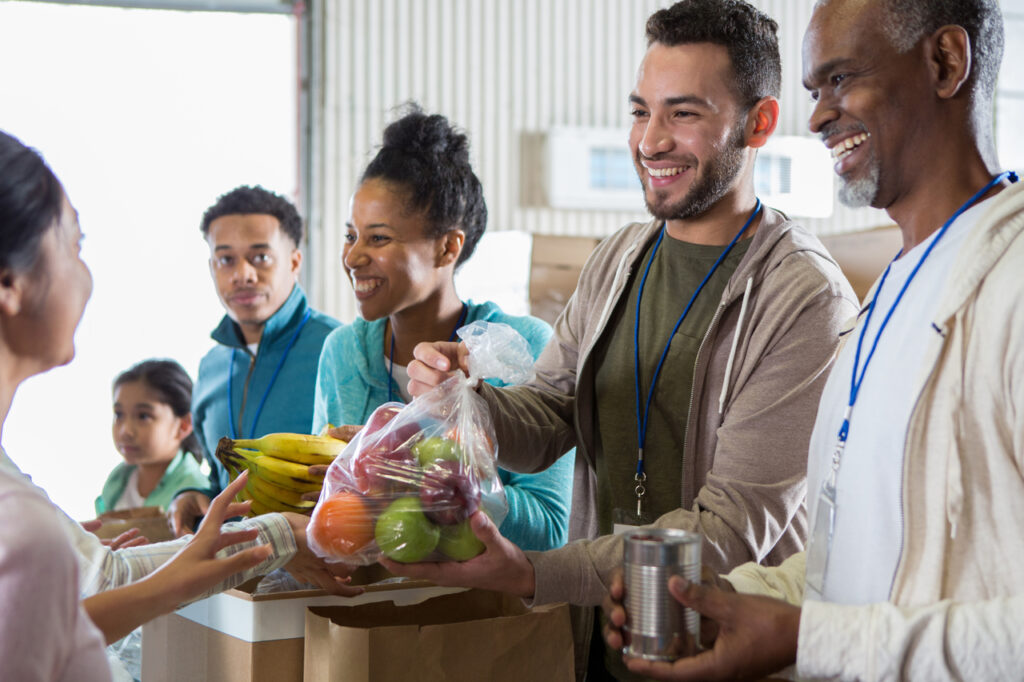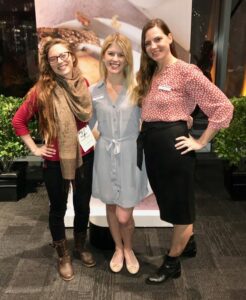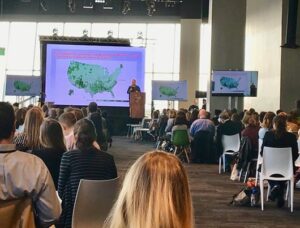
California SB 1383 looms large on many of our clients’ minds—and on ours, as we help with the outreach portion of implementing the law locally. It’s an exciting prospect to see not only downstream measures like organics recycling mandated statewide but also upstream prevention, with the requirement to recover 20 percent of currently disposed food that’s edible to feed people. In this blog, we share some of our experience creating outreach tools for food recovery.
For local jurisdictions, this means not only figuring out the nuts and bolts of a functioning food recovery system, but also how to communicate to the affected parties. And the clock is ticking—by or before February 1, 2022, jurisdictions need to provide “outreach and education” to the first wave of affected commercial edible food generators as well as food recovery organizations and services.
The law may seem overwhelming, but fortunately a lot of the basic principles of good outreach are helpful here:
-
Segment your audience(s)
Consider your outreach and messaging to the different audiences as separate efforts. For example, the content, timing and channel of your outreach to the first wave of large food businesses (the state calls them “Tier 1” businesses) will differ from the second wave of smaller food businesses (called “Tier 2”), and both will differ from food recovery organizations.
There will likely be only a small number of Tier 1 businesses for most counties, and they will require direct outreach—phone calls, web meetings, emails and visits. Your learnings from reaching out to Tier 1 can help streamline your efforts for Tier 2. Consider this a test run!
-
Engage stakeholders
Put yourself in the shoes of businesses — they are not steeped in “1383” like we are. Since this is new territory for all parties, consider having interviews or web meetings with businesses to help you develop your content and/or test your messaging to see if it is clear.
-
Create outreach tools with clear and inclusive language.
Craft messaging with an eighth-grade reading level in mind—which is what magazines and popular literature generally use.
- Avoid regulatory terminology as much as possible and translate industry jargon into everyday terms anyone can understand.
- For example, define the term “recovery.” This is a term unfamiliar to businesses. Our clients have found it preferable to using the term “donation.” If that’s the case for you, help your audience understand what “recovery” is and provide context. For example, say, “Separate edible food that would otherwise be composted or landfilled so it can be “recovered” to feed people.”
- Be considerate and inclusive in your language e.g., say “food insecure” rather than “hungry.”
-
Plan a “multi-touch” outreach effort.
-
- Start with an official notification letter, mailed 6 months in advance. Keep your first “touch” simple, high level and focused on what’s coming. Rather than overwhelming them with details, get people’s attention first.
- Create a web page or site to hold detailed information, including any legal documents such as a local ordinance or a model contract for edible food collection services.
- Follow up your letter with direct outreach to affected businesses and food recovery organizations. Business outreach best practices have always relied on phone calls, emails, meetings and technical assistance to get results.
- To build general awareness of 1383 in the business community, consider partners like chambers of commerce, business associations and environmental health departments, and ask to be included in announcements using their email lists and social media channels.
SB 1383 is a complex law and an exciting prospect with laudable goals. Using the basic rules of good outreach and remembering that businesses need direct outreach, you will be on your way to helping California put edible food to better use—all while fighting climate change!



